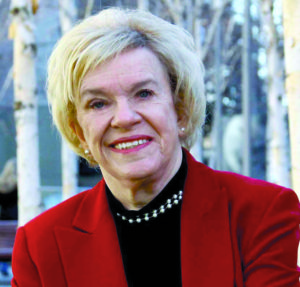Pub. Note: Adding substantially to the value of the marketingnw.com website is the addition of two regular columnists who also are true Seattle icons—Jean Godden and Pat Cashman!
Jean’s column debuts below, and Pat’s will debut on May 5. They join our other regulars—Ted Leonhardt, Rick Stanton and Don Riggs—in what we’ve dubbed our “Fab Five.”
What’s Seattle?: The Changing Look
 For as long as I’ve lived in Seattle (all my adult years), this city’s image has been changing dramatically from decade to decade. When I first arrived here, it was a little-known destination, North of San Francisco and maybe next-door to Nome, Alaska. Fashion trendsetters said mean things like “What time is it in Seattle when it’s noon in New York?” The cringe-worthy answer: “1938.”
For as long as I’ve lived in Seattle (all my adult years), this city’s image has been changing dramatically from decade to decade. When I first arrived here, it was a little-known destination, North of San Francisco and maybe next-door to Nome, Alaska. Fashion trendsetters said mean things like “What time is it in Seattle when it’s noon in New York?” The cringe-worthy answer: “1938.”
In the post-War boom years, Seattle was seen as an aspiring blue-collar town, known for its bustling waterfront, its maritime industries and its booming aircraft industry. Those were the years before downtown expansion, times when the Smith Tower still topped the skyline and city boosters wanted to be as freeway-ridden Los Angeles and as hipster “cool” as San Francisco.
The end to this city’s small-town image came with the Seattle World’s Fair in 1962. The fair focused on space and innovation, the impending “world of tomorrow.” As an internationally sanctioned event, the fair was limited to a six-month run. But in that time, it gave Seattle its Space Needle icon and a 74-acre civic center, dedicated to arts, science and commerce. What had been a little-known town had become an identifiable city. People from elsewhere could find us on the map.
Seattle’s next remake came with the launch of the tech industry and the personal computer, the 1990s Microsoft phenomenon. When overseas, Seattle residents learned that they no longer needed to say “Boeing” to identify their hometown. The simple words “Bill Gates” were sufficient.
The city next began acquiring multiple images. Not only was Seattle a top tech town, but it also was the Starbucks, Nordstrom, Costco, grunge music, craft beer, outdoorsy city. Sure, Seattle had a quirky side, home to the Troll statue, the Fremont Rocket and puzzling idols like the Pike Place Market gumwall. It’s no wonder the sit-com “Fraiser” (which was never filmed here) and the movie “Sleepless in Seattle”(which partly was) helped polish the city’s trendy image.
The subsequent decades, first years of the new millennium, cast Seattle as a more mature destination city, the nation’s fastest growing, most prosperous metropolis, a regular Amazonia. Seattle had it all, although many faulted it. Nothing like being on top to take hits. One of the New Years’ wishes of other cities at the beginning of 2019 was to be “not like Seattle.” They even had a word for it. They wanted to avoid the dreaded “Seattle-ization.”
What then is the image of Seattle today, the city in the waning days of the pandemic? For better or worse, it’s not the Seattle of even a year ago. Seattle has wounds and ugly scars from 2020. What one sees are boarded-up storefronts, graffitied buildings, sidewalks covered in a forest of tents and the heart-break of homelessness. The city’s once-acclaimed parks have become the victim of illegal camping, the city’s greenbelts are littered with trash. Sadly, today the city is a place where we can say that a look “not like Seattle” would be a good thing. For many of us, there is no true Seattle here.
The city’s present image is shabby and shameful and it should not be the Seattle look of the future. It’s past time when we should start on the pathway, long though it may be, to a better Seattle tomorrow. What will it take to pull the city out of its unfortunate spiral?
Turns out, even amid the shameful image of today, there is hope. This is an election year, a year when we will have a chance to elect determined leaders who can guide us back to the Seattle of our aspirations.
Throughout this election year, whenever we have the opportunity, we need to question each candidate, we need to demand to know: What can you do to make Seattle better? Tell us the specific steps you plan to take and how you’ll make them happen. Tell us what you can do to heal divisions, to promote equality, to provide for the unhoused and to ensure safety for all. No pie in the sky promises: just the facts and the specifics please. Tell us what the Seattle we want to love will look like.
Jean Godden is a veteran Seattle P-I and Seattle Times newspaperwoman and city councilwoman. Her column gives us an insider’s view of city politics. You can email Jean at jgodden@blarg.net.





